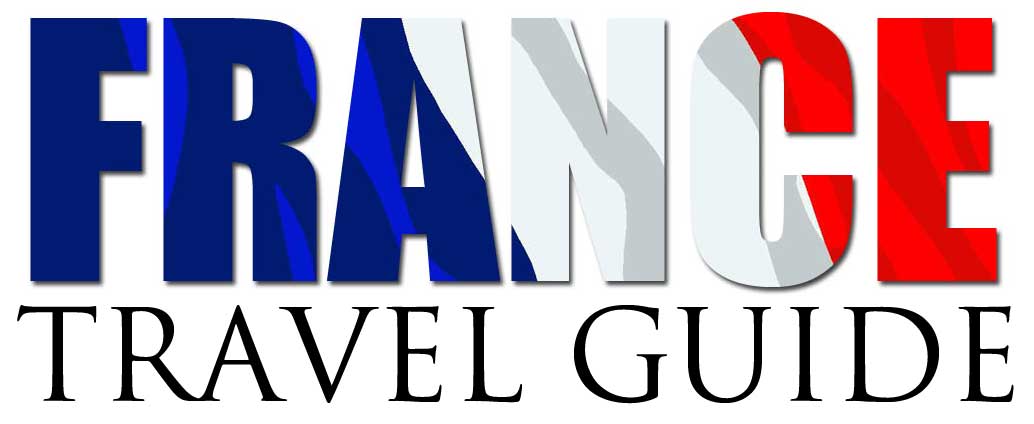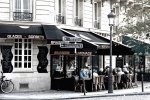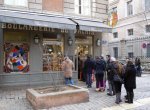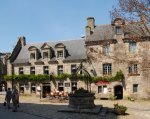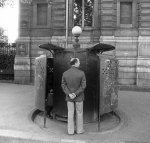7 French castles and chateau you must visit in France
plus our visitors guide to over 50 more French castles and chateau you can visit no matter where you are in France.
what are French castles?
The French word 'chateaux' is generally translated as castle, but it also means a 'country house'. A château fundamentally is a manor house or residence of the lord of the manor, or a country house of nobility or gentry, with or without fortifications.
page menu
7 best French castles
7) Chateau of Vincennes (Paris)
50 more French castles and chateau to visit
Best 7 French castles to visit
1) Chateau d'if
Surely the most dramatic of all French castles? And my personal favourite. This famous island fort facing Marseille, was immortalised by Alexander Dumas in The Count of Monte Cristo.
The castle was built by François I in 1529 and over the centuries it gained a fearsome reputation as many opponents of royal power were jailed and died in the fortress.
A prison from 1541, it housed the most famous prisoners in the history of France, including the Comte de Mirabeau, incarcerated on the orders of his father, the famous Physiocrat.
The Castle of If is perfectly preserved and is one of the most impressive historical sites on the Mediterranean coastline.
chateau d'if visitor information
13177 Marseille Cedex 20
Tel: 04 91 59 02 30
Website
Open 15th May to 20th September: from 1000 to 1800. 21st September to 14th May: from 1030 to 1700.
The last visit depends on the timetable of boats, information at the tourist information center, on the website.
Shuttle times: ask for information at monument:
Tel: 04915902 0 or 0603062526
Closed Mondays from 21st September to 14th May, 1st January, 25th December and subject to bad weather.
2) Chateau de Rambouillet
Chateau de Rambouillet is the summer residence of the Presidents of France. Originally it was a fortified manor house dating from the mid-14th century. In the late 18th century, the chateau became the private property of Louis XVI, who bought it as an extension of his hunting grounds. It was not to his wife's liking, however: Queen Marie-Antoinette is said to have exclaimed: "Comment pourrais-je vivre dans cette gothique crapaudière!" (How could I live in this Gothic toadhouse!)
During the French Revolution, the domain of Rambouillet became national property, the castle being emptied of its furnishings and the gardens and surrounding park falling into neglect. During the reign of Napoleon I, Rambouillet was included in the list of government-owned property at the disposal of the head of state. The emperor came several times to Rambouillet, the last being on the night of 29-30 June 1815, on his way to exile to Saint Helena.
After the fall of Napoleon III in 1870, the domain of Rambouillet was leased for 13 years to the duc de la Trémoille. Then, in February 1896, Rambouillet received a visit from President Félix Faure who decided to spend his summers there with his family. Since that time, the château has become the summer residence of the Presidents of the Republic, and is sometimes referred to as the Palace of Rambouillet.
Chateau de rambouillet visitor information
Rue de la Motte, 78120 Rambouillet
Tel: 01 34 83 00 25
Website
Open daily except Tuesday. January to March and October to December 9.50am–noon, 1.50–5pm. April to September 9.50am–noon, 1.50–6pm
Closed 1 January, 1 May, 1 and 11 November, 25 December.
3) Chateau du Colombier
Along the road taken by the Lords of Rouergue, in a valley near Rodez, stands the splendid Chateau du Colombier and its gardens. Here you will find the history of animals, simple gardens, the stories of men and their lives from today and yesterday.
Sheltered beneath the walls of the chateau, the medieval garden, once a place of courtly romance, is filled with the perfumes of flowers and herbs that have been used since ancient times.
This delightful setting has been the family seat of the Counts of La Panouse for thirty generations.
The Garden of Eden contains over 350 species of plants and shrubs cultivated in Europe between 800 and 1440, which today are displayed across five separate gardens; it's a living history of gardens from the time of Charlemagne to the 15th century.
chateau du colombier visitor information
Mondalazac, 12330 SALLES LA SOURCE
Tel: 05 65 74 99 79
Website
Open early April-October at varying times. Consult the website for current details.
4) Château de Fontainebleau
It's known as the birthplace of kings. Set amid 130 acres of parkland and gardens, and with more 1,500 rooms, the Chateau de Fontainebleau is the only royal and imperial château to have been continuously inhabited for over 700 years. A visit to Fontainebleau introduces you to an unparalleled view of French history, art history and architecture.
The Royal Château de Fontainebleau is a large palace where the kings of France took their ease. It is also the site where the French royal court, from 1528 onwards, entertained the body of new ideas that became known as the Renaissance.
There have been numerous illustrious residents: Philip IV, king of France was born and died at Fontainebleau; Francis II, Henry II and Louis XIII were all born here. Christina, Queen of Sweden lived her for a time, and it was here that her lover, Gian Rinaldo Monaldeschi was murdered.
A visit to Fontainebleau is something that will take an entire day; this is not a place to be rushed.
chateau de fontainebleau visitor information
The château is open every day except for Tuesdays, 1 January, 1 May and 25 December.
October to March: 9.30am-5pm (last admissions at 4.15pm)
April to September: 9.30am-6pm (last admissions at 5.15pm)
The courtyards and gardens are open every day.
November to February: 9am-5pm
March, April and October: 9am-6pm
May to September: 9am-7pm
The Jardin de Diane and the Jardin Anglais close respectively half an hour and an hour before the times shown. Outside of the summer season, the Jardin Anglais may be closed. For further information, call: 01 60 71 50 70
The park is open 24 hours a day, 7 days a week.
Getting there
By car
Take the A6 from Paris (Porte d’Orléans or Porte d’Italie), follow the turnoff for Fontainebleau.
Follow signs for Fontainebleau, then follow the “Château” signs.
By train
From the Gare de Lyon (main line), take the train for either Montargis Sens, Montereau or Laroche-Migennes, alighting at Fontainebleau-Avon station, then take the ‘Ligne A’ bus destined for Les Lilas, alighting at the ‘Château’ stop.
The Paris / Vaux-le-Vicomte / Fontainebleau shuttle service
Parivision runs a regular shuttle service between Fontainebleau and Paris, departing from 214 rue de Rivoli.
5) Château de Pierrefonds
Dating to the 15th century, the Château of Pierrefonds was comprehensively recreated by architect Viollet-le-Duc in the 19th century for Napoleon III.
The château on the southeast edge of the Forest of Compiègne, north east of Paris, between Villers-Cotterêts and Compiègne, gives the impression that it was specifically built for a swashbuckling film with its richly varied painted and sculpted decor. Its defensive system and drawbridge, walkways and drop-boxes, not to forget the three reconstructions of medieval siege engines.
It's no surprise such movies as Highlander; The Story of Joan of Arc, and the 1998 version of The Man in the Iron Mask have been filmed here.
In 1617, during the early days of Louis XIII's reign, the castle was besieged and taken by troops sent by Richelieu, the Secretary of State for War. Its demolition was started, but not carried through to the end because of the enormity of the task. The exterior works were razed, the roofs destroyed and holes made in the towers and curtain walls.
The castle remained a ruin for more than two centuries. Napoleon I bought it in 1810 for less than 3,000 francs. During the 19th century, it became a "romantic ruin". The Château has been classified as a Monument Historique by the French Ministry of Culture since 1848.
Château de Pierrefonds Visitor information
rue Viollet-le-Duc, 60350 Pierrefonds
Tel: 03 44 42 72 72
Website
Open 2nd May to 4th September: from 0930 to 1800. 5th September to 30th April: from 1000 to 1300 and from 1400 to 1730
Closed Mondays from 5th September to 30th April, 1st January, 1st May and 25th December.
6) Château de Versailles
For more than 30 years the Château de Versailles has been listed as a world heritage site.
The Palace of Versailles is among the finest achievement of French architectural design of the 17th century. When the château was built, Versailles was a country village. Today it is a sizeable suburb of Paris, some 20km (12 miles) south-west of the capital.
The court of Versailles was the centre of political power in France from 1682, when Louis XIV moved from Paris, until the royal family was forced to return to the capital in October 1789 after the beginning of the French Revolution.
As a result, Versailles is famous not only as a building, but as a symbol of the system of absolute monarchy of the Ancien Régime.
Initially, Versailles was planned to be an occasional residence for Louis XIV and was referred to as the "King's house". Accordingly, much of the early funding for construction came from the king's own purse. Though he did have revenues from the province of New France (Canada), which, while part of France, was a private possession of the king and therefore exempt from the control of the Parliaments. So he wasn't short of a Euro or two.
For the visitor the highlights are the Grands Appartements, the Galerie des Glaces (Hall of Mirrors), the Appartement de la Reine (the Queen's apartments), and, of course, the gardens, which are open daily from 0800-2030.
Château de Versailles Visitor information
Place d'Armes - 78000 Versailles
Tel: 01 30 83 78 00
Website
Open
Daily (except Mon)
Apr-Oct 0900-1830
Nov-Mar 0900-1730
Tickets
There are several admission tickets: choose yours depending on how much time you have and the places you would like to see.
Getting there
By rail
RER C: To get to the palace of Versailles, make sure to buy a "Paris - Versailles Rive Gauche" ticket (zones 1-4) (T+ ticket is not valid for this journey).
SNCF Trains: Arrive at Versailles Chantiers station from Paris Montparnasse
Arrive at Versailles Rive Droite station from Paris Saint Lazare
Train schedule on www.transilien.com
By car
A13 motorway, exit Versailles Centre
Paying car park at the Place d’Armes, Allée de Bailly, Grand Trianon and Petit Trianon.
7) Château of Vincennes (Paris)
Dating to the 12th century, Vincennes is one of the few castles that, from the Middle Ages, has consistently found a place at the centre of French History. It is one of the biggest and best preserved castles in Europe.
Like other châteaux it had its origins in a meagre hunting lodge, constructed for Louis VII about 1150 in the forest of Vincennes. In the 13th century, Philip Augustus and Louis IX erected a more substantial manor: Louis IX is reputed to have departed from Vincennes on the crusade from which he did not return.
The Château of Vincennes was used as royal residence from the 12th to 18th century and its 14th-century keep, at 42m, is the highest of its kind in Europe. In 1365, Charles V, transformed the family manor house at Vincennes into a more suitable royal dwelling and built the present keep to house his art collection and manuscripts.
From the early 15th century to the 1800s, the keep was used as a prison, which saw the imprisonment of famous figures such as Fouquet, the Marquis de Sade, and Mirabeau.
After extensive restoration work, the Sainte-Chapelle at the Château de Vincennes is once more open to the public and visitors can admire its decorative ensemble. Started in 1379, and based on the model of the royal chapel in the Palais de la Cité in Paris, the Sainte-Chapelle at Vincennes realised the dreams of King Charles V to add a truly exceptional religious edifice to this impressive fortress.
The chateau is composed of a surrounding wall, protected by three gates and six high towers, which stretches around over more than half a mile, protecting a central space of several acres. This interior square holds the keep, the civilian, administrative and military buildings and a chapel. In the Middle Ages, all of these elements together made it possible for several thousands of people to live here.
Château of Vincennes Visitor information
Avenue de Paris, 94300 Vincennes
Tel: 01 43 28 15 48
Website
Open late May to late September: from 1000 to 1800. Late September to late May: from 1000 to 1700
Closed 1st January, 1st May, 1st November, 11th November and 25th December.
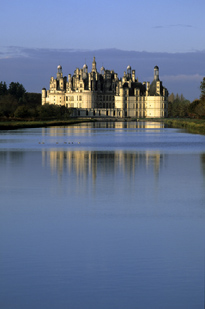 |
Perhaps above all other European countries, France is renowned for its chateaux. ©ATOUT FRANCE/Catherine Bibollet/Château de Chambord |
More about French castles
Care should be taken when translating the word château into English. It is not used in the same way as 'castle', and most châteaux are described in English as 'palaces' or 'country houses' rather than 'castles'. For example, the Château de Versailles is so called because it was located in the countryside when it was built, but it bears no resemblance to a castle, so it is known in English as the Palace of Versailles.
The urban counterpart of château is 'palais', which in French is applied only to grand houses in a city. This usage is again different from that of the term 'palace' in English, where there is no requirement that a palace must be in a city, but the word is rarely used for buildings other than the grandest royal residences.
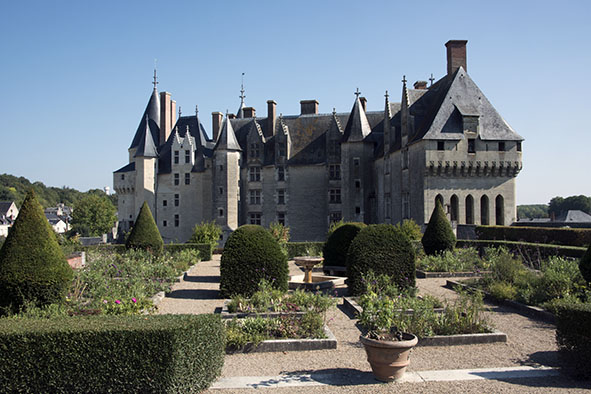
© Terry Marsh/Country Matters: Chateau Langeais, Loire valley
As a result of this wealth of 'chateaux', it is not easy to say definitively how many there are in France, certainly well over 1,000. Not all of them, indeed not the majority of them, are open to the public. Those listed below do open their doors to visitors. The list is neither exhaustive nor comprehensive, and will be updated from time to time. There are direct website links to each chateau, since these give opening hours and tariffs, which vary between chateaux on an individual basis, and, usually, are up-to-date.
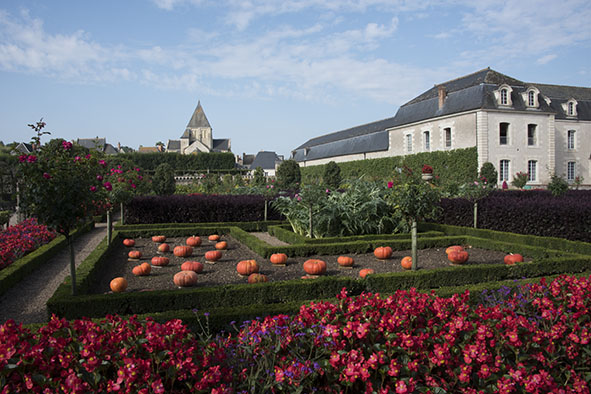
© Terry Marsh/Country Matters: Chateau Villandry, Loire valley
50 more French castles to visit
SELECT THE CHATEAUX BY REGION
Alsace
Aquitaine
Auvergne
Brittany
Centre
Ile de France
Languedoc-Roussillon
Limousin
Midi-Pyrénées
Normandy
Pays de la Loire
Picardy
Poitou-Charentes
Provence
CHATEAU HAUT-KOENIGSBURG, 67600 Orschwiller, Bas-Rhin, Alsace.
Tel: 03 69 33 25 00; www.haut-koenigsbourg.fr
Built in the 12th century, the chateau has witnessed numerous conflicts and rivalry between lords, kings and emperors.
Open daily, all year, except 1 January, 1 May and 25 December. Guided tours in English, daily at 1145.
CHATEAU BEYNAC, Beynac-Cazenac, Dordogne.
Tel: 05 53 29 50 40; www.beynac-en-perigord.com
The castle was built from the 12th century by the barons of Beynac (one of the four baronies of Périgord) to defend the valley. Telephone for opening hours.
CHATEAU BONAGUIL ,
Mairie de Fumel, 47500 FUMEL, Lot-et-Garonne.
Tel: 05 53 71 90 33; www.bonaguil.org
A stunning fortress-chateau on the border of Périgord Noir and Quercy, which exemplifies the status of military architecture in the 15th and 16th centuries.
Open daily Mar-Oct, and during school holidays in Jan-Feb, Nov-Dec.
CHATEAU CASTELNAUD,
24250 Castelnaud-la-Chapelle, Dordogne.
Tel: 05 53 31 30 00; www.castelnaud.com
The Château de Castelnaud was officially listed as an Historic Site in 1966. It stands high over the Dordogne valley, with magnificent views of the châteaux of Beynac and Marqueyssac and the medieval village of La Roque-Gageac.
Open daily, all year.
CHATEAU COMMARQUE,
24620 Les Eyzies-de-Tayac-Sireuil, Dordogne.
Tel: 05 53 59 00 25; www.commarque.com
The origins of this chateau are uncertain. The best current hypothesis attributes the founding of a keep at Commarque to one of two abbots who succeeded the abbey see of Sarlat during the last third of the 12th century: Garin (1169-1181) or Randolph de Commarque (1195-1201).
Open daily, Apr-Sep.
CHATEAU FENELON,
Sainte Mondane, Dordogne.
Tel: 05 53 29 81 45.
This is a lovely castle on a rocky promontory, surrounded by a triple wall and terraces dates from the 13th century, but the castle we see today is more from the 16th century, more of a luxury manor house than a castle.
CHATEAU MILANDES,
24250 Castelnaud la Chapelle, Dordogne.
Tel: 05 53 59 31 21; www.milandes.com
This privately-owned chateau was built in 1489, and is a fine example of Renaissance architecture with Gothic elements; the gardens were created between 1900 and 1908.
Open daily, Apr-Oct.
CHATEAU MONTFORT,
Carsac-Aillac, Dordogne.
The chateau de Montfort is high on a rocky ledge overlook the village of Montfort, and the cliffs and broad meander in the Dordogne river below.
Not open to the public.
CHATEAU DE VAL, 19110 Bort-les-Orgues, Cantal.
Tel: 04 71 40 30 20; www.chateau-de-val.com
The Chateau de Val is one of the best conserved and one of the most remarkable castles in the Haute-Auvergne. This imposing fortress is flanked by six, machicolated towers with pepper-pot turrets, the different roofs of which give VAL an original combination of colours.
Open daily mid Jun-mid Sep 1000-1230, 1400-1830; rest of year until 1730 every day except Tue. Closed mid Oct-end Mar.
CHATEAU PONTIVY, Rue du Général de Gaulle, 56300 PONTIVY, Morbihan.
Tel: (Tourist office) 02 97 25 04 10.
The chateau was built in the 15th century by Jean II de Rohan. The façade has retained two large towers with battlements, topped with pepper-pots. The walls, 20 metres high, are bordered by a moat but one that was never filled with water. The stately home, remodelled in the 18th century, is adorned with pediments and a beautiful double staircase.
Open: daily in Jul-Aug 1030-1900; rest of year from Wed-Sun 1000-noon, 1400-1800.
CHATEAU JOSSELIN, Place de la Congrégation, 56120 JOSSELIN, Morbihan.
Tel: 02 97 22 36 45, www.chateaujosselin.fr.
On the banks of the river Oust, in the heart of Morbihan, the splendid ancestral home of the Rohans has been inhabited by the founding family for almost ten centuries. With its three majestic towers overlooking the river and its flamboyant Gothic façade, this castle is a remarkable testimony to the feudal architecture of the Renaissance.
The chateau also houses a Doll Museum in the former stables. In 1984, Antoinette de Rohan opened the Doll Museum presenting 400 pieces, the oldest dating from the 17th century.
Open: Apr-mid Jul, daily 1400-1800; mid Jul-Aug daily 1100-1800; Sep daily 1400-1730; Oct Sat-Sun 1400-1730 and daily during school holidays.
CHATEAU ROYAL D'AMBOISE, 37403 AMBOISE, Indre-et-Loire.
Tel: 02 47 57 00 98; www.chateau-amboise.com.
The beautiful chateau at Amboise has considerable historical importance; Louis XI lived here; Charles VIII was born and died here; Francois I and Catherine de' Medici were frequent visitors. Visitors will be shown were 1,200 Huguenot conspirators were hung from iron hooks on the castle walls.
Open: All year from 0900, but hours vary especially during the winter months. So, check the website for the time of your visit.
CHATEAU D'AZAY LE RIDEAU, 37190 Azay-le-Rideau, Indre-et-Loire.
Tel: 02 47 45 42 04; Website.
Built on the foundations of a medieval fortress in the heart of Touraine, the World Heritage Château d'Azay-le-Rideau is the creation of Gilles de Berthelot. It stands in the centre of a romantic park, a masterpiece of 16th-century architecture that has retained all the refinement, elegance and grace of an exceptional Renaissance château.
Open: daily Oct-Mar 1000-1715; Apr-Jun and Sep 0930-1800; Jul-Aug 0930-1900. Closed 1 Jan, 1 May, 25 Dec.
CHATEAU DE BEAUREGARD, 12 Chemin de la Fontaine 41120 Cellettes, Loir-et-Cher.
Tel: 02 54 70 41 65; www.beauregard-loire.com.
The chateau stands in a huge park above the Beuvron valley, and has managed to retain its Renaissance character in spite of much later additions and a roof extension. It has been inhabited continuously since the late 15th century.
Open: mid Feb-mid Apr Mon-Fri 1300-1700, Sat-Sun 1030-1700 (1800 from Mar); mid Apr-May daily 1030-1830; Jun-Sep daily 1000-1900; Oct-mid Nov Mon-Fri 1300-1800, Sat-Sun 1030-1800; closed rest of year.
CHATEAU ROYAL DE BLOIS, 6, Place du Château 41000 Blois, Loir-et-Cher.
Tel: 02 54 90 33 33; www.chateaudeblois.fr.
In 1845, it was the first historical residence to be restored and served as a model for the restoration of many other chateaux. The Royal Chateau of Blois, classified as Museum of France, is filled with more than 35,000 works of art. Louis XII, François I and Gaston d'Orléans all had a part to play in the development of this wonderful chateau.
Open: daily except 1 Jan and 25 Dec: Jan-Mar, mid Nov-Dec 0900-1230, 1330-1730; Apr-Jun 0900-1800; Jul-Aug 0900-1900; Sep 0900-1830; Oct-mid Nov 0900-1800.
CHATEAU DE CHAMBORD, Chambord, Loir-et-Cher.
Tel: 08 25 82 60 88; www.chambord.org.
Chambord is the largest by far of the Loire chateaux, and very much foreshadowed Versailles. This was the idea of François I, originally started as a hunting lodge in the Forêt de Boulogne; he also had the idea of diverting the Loire so that it flowed in front of the chateau, but settled for diverting the Closson instead.
Open: daily: Jan-Mar 1000-1700; Apr-Sep 0900-1800; Oct-Dec 1000-1700.
CHATEAU CHAUMONT-SUR-LOIRE, 41150 Chaumont-sur-Loire, Loir-et-Cher. Chaumont-sur-Loire.
Tel: 02 54 20 99 22; www.domaine-chaumont.fr.
Chaumont-sur-Loire château, originally founded in the 10th century, dominates the Loire valley, and illustrates both the defensive architecture of its period and the architecture related to more refined pursuits of the Renaissance. In the 18th and 19th centuries, the chateau, which belonged to Queen Catherine de Medicis and later Diane de Poitiers, experienced an intense period of intellectual activity as the Le Ray de Chaumont family welcomed the sculptor Nini, the American Benjamin Franklin and writer Germaine de Staël. Each year, the gardens play host to a Garden Festival.
CHATEAU DE CHENONCEAU, Chenonceau, Indre-et-Loire.
Tel: 0820 20 90 90; www.chenonceau.com.
Chenonceau is the property of the Crown, and an exceptional site not only because of its original design, the richness of its collections, its furniture and its decorations. It is remarkable, too, in being largely preserved by the influence of women. It was built in 1513 by Katherine Briçonnet, and successively embellished by Diane de Poitiers then Catherine de Medici, and was protected from the hardship of the revolution by Madame Dupin. The chateau houses an exceptional museum of paintings by the old masters.
Open: The chateau is open all year, daily from 0900, but closing times vary between 1700 and 1930 according to season.
CHATEAU DE CHEVERNY, 1 Avenue Château 41700 Cheverny, Loir-et-Cher.
Tel: 02 54 79 96 29; www.chateau-cheverny.com.
The chateau, on the edge of the Sologne forest, has delightful and harmonious proportions, and has been in the same family for more than six centuries. The building has a Classical façade of white stone, topped by a superb slate roof.
Open: All year, daily: Jan-Mar 1000-1700; Apr-Sep, 0915-1830; Oct-Dec 1000-1700.
FORTRESSE ROYALE DE CHINON, 37500 Chinon, Indre-et-Loire.
Tel: 02 47 93 13 45; www.forteressechinon.fr.
Château de Chinon is located on a rocky shoulder above the Vienne river. It was founded by Theobald I, Count of Blois. In the 11th century, the castle became the property of the counts of Anjou. In 1156. Henry II of England, a member of the House of Anjou, took the castle from his brother Geoffrey after he had rebelled for a second time. Henry favoured the Château de Chinon as a residence: most of the standing structure can be attributed to his reign and he died there in 1189.
Open: daily, all year except 1 Jan and 25 Dec. Jan-Feb and Nov-Dec 0930-1700; Mar-Apr and Sep-Oct 0930-1800; May-Aug 0930-1900.
CHATEAUDUN, Eure-et-Loir.
Tel: 02 37 94 02 90.
The chateau of Chateaudun is the first to be encountered on the way out from Paris into the Loire valley. Both the castle and its town stand on a hill above the Loir, on the edge of the region known as Beauce.
Open: daily except 1 Jan, 1 May and 25 Dec. May-Aug 1000-1300, 1400-1800; Sep-Apr 1000-1230, 1400-1730.
CHATEAU DE GIZEUX, 37340 Gizeux, Indre-et-Loire.
Tel: 02 47 96 45 18; http://www.chateaudegizeux.com.
First opened to the public in 1993, the castle is firstly a home where three generations live together. As a result, you enter a fully furnished ‘residence’ that has retained much of the character of its different building periods, as well as the biggest wall painting gallery in the area.
Open: Apr and Oct, Mon-Sat 1000-1730, Sun 1400-1730; May-Sep, Mon-Sat 1000-1900, Sun 1400-1900. Guided tours available.
CHATEAU LANGEAIS, 37130 Langeais, Indre-et-Loire.
Tel: 02 47 96 72 60; www.chateau-de-langeais.com.
A thousand years ago, Touraine was coveted both by the Count of Anjou, Foulque Nerra, and the Count of Blois, Eudes I. At the end of the 10th century, Foulques Nerra conquered Langeais, not far from Tours, and established a castle on the promontory; all that remains of it now are a few traces of the keep. For the next four decades, Langeais was occupied by the successive Counts of Blois and Anjou. Finally, in 1044, along with the rest of Touraine, it fell into the hands of the Plantagenets and then of their descendants who were the Kings of England. It was not until 1206 that Langeais became part of the French realm, after the victories of Philippe Auguste (King Philippe II) over England’s King John.
Open: All year, daily: Feb-Mar, 0930-1730; Apr-Jun, Sep-mid Nov, 0930-1830; Jul-Aug, 0900-1700; mid Nov-Jan, 1000-1700 (25 Dec, 1400-1700).
CHATEAU DU LUDE, 72800 Le Lude, Indre-et-Loire.
Tel: 02 43 94 60 09; www.lelude.com.
The original fortress was built between the 10th and 11th centuries on the banks of the Loir to defend Anjou from the incursions of the Normans and then the English during the Hundred Years War. Gilles de Rais, the Blue Beard of legend, was victorious in battle there in 1427, before joining Joan of Arc at Orleans. In the hands of the same family for the last 250 years, Le Lude belongs to the Count and Countess Louis-Jean de Nicolaÿ, who have carried on its tradition of restoration and decoration.
Open: Apr-Sep, daily (except Wed in Apr-Jun and Sep): Gardens: 1000-12130, 1400-1600; Chateau (guided tours): 1430-1800.
CHATEAU LA FERTÉ-SAINT-AUBIN, Route d'Orléans, 45240 LA FERTE ST AUBIN, Loiret.
Tel: 02 38 76 52 72; www.chateau-ferte-st-aubin.com.
Located in the heart of the Sologne, above the river Cosson, the chateau comprises 15 furnished rooms and kitchens, along with stables, and a 50-hectare park.
Open: daily, all year: 1000-1900.
CHATEAU DE MONTRÉSOR, 29 Grande Rue, 37460 Montrésor, Indre-et-Loire.
Tel: 02 47 92 60 04.
The chateau de Montrésor is one of the most beautiful along the Loire, and has changed little over the last 150 years. In 1848, a Pole, Count Xavier Branicki, counsellor and friend of Prince Louis Bonaparte, future Napoleon III, bought the castle, fully restored and renovated the park in a style the romanticism of the time.
Open: Apr-mid Nov, daily 1000-1900; mid Nov-Mar, Sat-Sun 1000-1800. The park is open all year, 1000-1800.
CHATEAU SULLY-SUR-LOIRE, 45600 Sully-sur-Loire, Loiret.
Tel: 02 38 36 36 86; Sully-sur-Loire
Built at the end of the 14th century on the banks of the Loire, the Château of Sully is the eastern doorway into the Loire valley. The château is a true medieval fortress that was first classified as a Historical Monument in 1928.
Open: daily: Apr-Sep 1000-1800; Feb-Mar and Oct-Dec daily except Mon 1000-1200, 1400-1700. Guided tours available.
CHATEAU D'USSÉ, Indre-et-Loire.
Tel: 02 47 95 54 05; www.chateaudusse.fr
The stronghold at the edge of the Chinon forest overlooking the Indre valley was first fortified in the 11th century by the Norman seigneur of Ussé, Gueldin de Saumur, who surrounded the fort with a palisade on a high terrace. The site passed to the Comte de Blois, who rebuilt in stone. It is said that the chateau inspired Walt Disney in his creation of many Disney castles.
Open: mid Feb-Mar and Sep-early Nov 1000-1800; Apr-Aug, 1000-1900.
CHATEAU DE VALENCAY, 2 Rue Blois 36600 Valençay, Indre.
Tel: 02 54 00 15 69; www.chateau-valencay.fr
In the 15th century, the lordship passed to the family of Etampes, which occupied an important place in France. The son and successor, Louis d'Etampes, Bailiff and governor of Blois under Francis I erected a small castle in the late 15th century using the fortune of his wife, Marie Hurault. Today's chateau is massive, resembling that of Chambord.
Open: daily: mid Mar-Apr, 1030-1800; May and Sep, 1000-1800; Jun, 0930-1830; Jul-Aug, 0930-1900; Oct-mid Nov, 1030-1730.
CHATEAU DE VILLANDRY, 3 Rue Principale 37510 Villandry, Indre-et-Loire.
Tel: 02 47 50 02 09; www.chateauvillandry.fr.
Chateau de Villandry is the last of the great chateaux of the Loire built during the Renaissance. The sober elegance of its architecture combined with the charm of its outstanding gardens make this one of the jewels of world heritage. The chateau has some unusual features for the region, notably the rectangular pavilions, and the layout of its esplanade and its moat. It has the distinction of being the residence of neither a king nor a courtesan, but of Jean Le Breton, Minister of Finance for François I.
Open: daily. The gardens are open daily from 0900; the chateau is open from 0900 from mid Feb to mid Nov; closing times vary according to season.
CHATEAU DE VINCENNES, Avenue de Paris,
94300 Vincennes, Val-de-Marne.
Tel: (Box office and shop): 01 48 08 31 20;
(Dungeon reception): 01 41 74 19 12; Chateau de Vincennes.
Dating back to the 12th century, a little before the Louvre, Vincennes is one of the few castles which, from the Middle Ages to our time, has consistently found itself at the centre of French History. Vincennes is one of the biggest and best-preserved castles in Europe.
Open: daily: late Sep-late May 1000-1700; rest of year 1000-1800. Closed 1 Jan, 1 May, 1 and 11 Nov, 25 Dec.
CHATEAU DE VAUX LE VICOMTE, 77950 MAINCY, Seine-et-Marne.
Tel: 01 64 14 41 90; www.vaux-le-vicomte.com.
Château de Vaux-le-Vicomte is a baroque French château built from 1658 to 1661 for Nicolas Fouquet, Marquis de Belle Île, Viscount of Melun and Vaux, the superintendent of finances of Louis XIV. The château was an influential work of architecture in mid-17th century Europe, and said to have been the inspiration for Versailles, and a building that marked the beginning of the "Louis XIV style" combining architecture, interior design and landscape design.
Open: daily: mid Mar-mid Nov, 1000-1800, and during Christmas holidays.
CHATEAU DE RAMBOUILLET, 78120 Rambouillet, Yvelines.
Tel: 01 34 83 00 25 or 01 34 83 29 09; chateau-rambouillet.monuments-nationaux.fr.
The chateau is the summer residence of the Presidents of the French Republic. It was originally a fortified manor dating back to 1368 and, although altered structurally at the time of Napoleon I, it still retains its pentagonal layout. King Francis I died there, on 31 March 1547, probably in the imposing medieval tower that bears his name. Like the Hôtel de Rambouillet in Paris, the château was owned by Charles d'Angennes, the marquis de Rambouillet during the reign of Louis XIII.
Open: daily for visits except Tue: Apr-Sep, 1000, 1100, 1400, 1500, 1600 and 1700; Oct-Mar, 1000, 1100, 1400, 1500, 1600.
CHATEAUX DE LASTOURS, 11600 Lastours, Aude.
Tel: 04 68 77 56 02; Chateaux de Lastours.
The Châteaux de Lastours are four Cathar castles on a rocky spur above the village of Lastours, isolated by the deep valleys of the Orbeil and Grésilhou rivers. Cabaret, Surdespine and la Tour Régine stand in line, while Quertinheux is built on a separate pinnacle close by. The site has been classified 'Monument Historique' since 1905.
These four castles constitute a single entity, even though they are not a single structure.
Open: daily 1000-1700/1800; Sat-Sun only in Feb-Mar and Nov-Dec.
CHATEAU DE PEYREPERTUSE, Duilhac-sous-Peyrepertuse, Aude.
Tel: 04 82 53 24 07; www.chateau-peyrepertuse.com.
Peyrepertuse is a ruined fortress, one of the Cathar castles of the Languedoc, located in the commune of Duilhac-sous-Peyrepertuse, in the Aude département. It was associated with the Counts of Barcelona, later kings of Aragon. The name Peyrepertuse is derived from Pèirapertusa, Occitan, meaning Pierced Rock.
Open: daily all year except 3 weeks in Jan: Jan, Nov-Dec 1000-1630; Feb, 1000-1700; Mar and Oct, 1000-1800; Apr, 0930-1900; May-Jun and Sep, 0900-1900; Jul-Aug 0900-2000.
CHATEAU DE QUERIBUS, 1 Rue Achille Mir, 11350 Cucugnan, Aude.
Tel: 04 68 45 03 69; www.cucugnan.fr.
The Château de Quéribus is a ruined castle in the commune of Cucugnan, and has been listed as a 'Monument historique' since 1907. Queribus is one of the "Five Sons of Carcassonne", along with Aguilar, Peyrepertuse, Termes and Puilaurens: five castles strategically placed to defend the French border against the Spanish, until the border was moved in 1659.
It is generally regarded as the last Cathar stronghold. After the fall of Montségur in 1244, surviving Cathars gathered together in this mountain-top stronghold on the border of Aragon (the present border between the Aude and the Pyrénées-Orientales).
Quéribus is high and isolated. It stands on top of the highest peak for miles around. In 1951 restoration work on the turret began, and between 1998-2002 a complete restoration of the castle was undertaken: the castle is now accessible to visitors.
Open: daily: Jan and Nov-Dec, 1000-1700; Feb, 1000-1730; Mar, 1000-1800; Apr-May, Jun-Sep 0930-1900 (Jul-Aug, 0900-2000); Oct, 1000-1830.
TOURS DE MERLE, Saint-Geniez-ô-Merle, Corrèze.
Tel: 05 55 28 22 31, or 05 55 28 28 89; www.st-geniez-o-merle.com.
The medieval remains of the Tours de Merle's 12th and 14th century stand on a secluded peninsula by the river Maronne . The site includes a 10 hectare park with ruins of the village, restored farmhouse, garden crops in the Middle Ages, animals and the House Madège (archaeological exhibition and model of the site).
Many nobles lived together here in this feudal citadel, using the rocky peak as a military haven, as vassals to the Viscounts of Turenne. In effect, the fortress acted as a frontier post between the Dukes of Aquitaine and the Counts of the Auvergne.
Open: daily: Apr-Jun and Sep, 1400-1800; Jul-Aug 1000-1700; Oct, Suns only except last week, daily.
CHATEAU DE CASTELNAU-BRETENOUX, 46130 Prudhomat, Lot.
Tel: 05 65 10 98 00; Chateau de Castelnau.
Castelnau castle stands in an enviable hilltop location with extensive views across the surrounding countryside, and is one of the most impressive sites in the Lot. From the middle of the 12th century, the castle fell into English hands only returning to France following the end of the Hundred Years War.
Open: daily: Apr and Sep, 1000-1230, 1400-1730; May-Jun, 1000-1230, 14000-1830; Jul-Aug, 1000-1900; Oct-Mar, daily except Tue, 1000-1230, 1400-1730.
CHATEAU DE FOIX, 12 Rue Lazema 09000 Foix. Ariège.
Tel: 05 61 05 10 10.
From its impressive rock, the castle dominates the town; in centuries past it controlled access to the upper Ariège valley and watched over the countryside, protected by impregnable walls. The siting of the castle was strategic because, like the hundred or so fortress châteaux in Ariège (most in ruins today), it dates from an era of great insecurity, banditry and territorial rivalries.
Open: The chateau is open most of the year on a daily basis, but the hours are complex; check the website for opening hours at the time of your visit.
CHATEAU DE MONTSÉGUR, Montségur, Ariège.
Tel: 05 61 01 06 94/05 61 01 10 27/05 61 03 03 03; www.montsegur.fr.
The Château de Montségur is a former fortress near Montségur, a commune in the Ariège department. At an altitude of 1207m (3,960 feet), its ruins are the site of a razed stronghold of the Cathars, famous as the last Cathar stronghold, which fell after a 10 month siege in 1244. The present fortress on the site, though described as one of the 'Cathar castles', is actually of a later period. It has been listed as a 'Monument historique' since 1862.
Open: daily: Feb, and Nov-Dec, 1100-1600; Mar and Oct, 100-1700; Apr-Jun and Sep, 1000-1800; Jul-Aug, 0900-1900.
CHATEAU DE NAJAC, Rue du Château, 12270 Najac, Aveyron.
Tel: 05 65 29 71 65; tourisme-najac.com.
The royal fortress of Najac is located in the Aveyron département, built in 1253 by the villagers on the orders of Alphonse de Poitiers, brother of Saint Louis, on the site of an older castle (a square tower) built in 1100 by Bertrand of St Gilles, son of Raymond IV, count of Toulouse.
Open: daily: Apr-May and Sep-Oct, 1030-1300, 1500-1730; Jun, 1030-1300, 1500-1830; Jul-Aug, 1030-1330, 1500-1900 (mid Jul-mid Aug, 1030-1900).
CHATEAU GAILLARD, 27700 Les Andelys, Eure.
Tel: 02 32 54 41 93.
Chateau Gaillard is a ruined medieval castle overlooking the Seine in Upper Normandy. It is very much the stuff of legend, the stronghold of Richard the Lionheart (Richard I of England), friend of Robin Hood. Amazingly, this complex structure was completed within one year, and requiring no fewer than 6,000 labourers. The castle was intended to intimidate Philip Augustus of France, and built to discourage him from invading Normandy.
CHATEAU D'ANGERS, 2 Promenade du Bou du Monde 49100 Angers, Maine-et-Loire.
Tel: 02 41 86 48 77; Chateau d'Angers.
The Château d'Angers is in the city of Angers in the Loire valley. Founded in the 9th century by the Counts of Anjou, the castle was expanded to its current size in the 13th century. It is located on a rocky ridge overhanging the river Maine. Now open to the public, the Château d'Angers is home of the Apocalypse Tapestry, a medieval French tapestry commissioned by Louis I, the Duke of Anjou, and produced between 1377 and 1382. It depicts the story of the Apocalypse from the Book of Revelation.
Open: daily: May-Sep, 0930-1830; Sep-Apr, 1000-1730. Closed: 1 Jan, 1 May, 1 and 11 Nov, 25 Dec.
CHATEAU BAUGÉ, Place de l'Europe 49150 Baugé, Maine-et-Loire.
Tel: 02 41 84 00 74; www.chateau-bauge.fr.
The Chateau was built in the 15th century by King René, Duke of Anjou, who was a great lover of hunting, and so the castle at Baugé originally served as a hunting lodge. Nowadays, part of the chateau houses the Baugé Museum of Art and History. Whilst a short distance from the chateau is the Apothicairerie de Baugé, one of the finest old chemist’s (apothecary’s) shops in France.
Open: Feb-Nov, Wed-Sun, 1400-1800 (Jun-Sep, daily 1000-1230, 1330-1800).
CHATEAU DE BRÉZÉ, 49260 Brézé, Maine-et-Loire.
Tel: 02 41 51 60 15; www.chateaudebreze.com.
Château de Brézé is a small, dry-moated castle located near Saumur in the Loire valley. The château was transformed during the 16th and the 19th centuries. The current structure is Renaissance in style yet retains medieval elements including a drawbridge and a 12th-century basement. Today, it is the residence of descendants of the ancient lords. The château is a listed ancient monument originally dating from 1060. A range of wines are produced at the château which has 30 hectares of vineyards.
Open: Feb-Mar, and Oct-Dec, Tue-Sun, 1000-1800; Apr-Sep daily, 1000-1830 (Jul-Aug, 1000-1930). Closed: 25 Dec.
CHATEAU DE BRISSAC, Rue Louis Moron 49320 Brissac-Quincé, Maine-et-Loire.
Tel: 02 41 91 22 21; www.chateau-brissac.fr.
The Château de Brissac is a mansion in the commune of Brissac-Quincé, originally built as a castle by the Counts of Anjou in the 11th century. After the victory over the English by Philip II of France, he gave the property to Guillaume des Roches. (the castle got the name Brissac from one of its owners The Duke of Brissac). Today, the Château Brissac is owned by the de Cossé family. It has seven storeys altogether, making it the tallest chateau in the Loire valley.
Open: Apr-Jun, and Sep-Oct, daily except Tue, 1000-1215, 1400-1800; Jul-Aug, daily, 1000-1800.
CHATEAU MONTREUIL-BELLAY, Rue Château
Montreuil-Bellay, 49260 Montreuil-Bellay, Maine-et-Loire.
Tel: 02 41 52 33 06.
The Château de Montreuil-Bellay is an historical building, first built on the site of a Gallo-Roman village high on a hill on the banks of the Thouet River. It is listed as a 'Monument historique' by the French Ministry of Culture. During the medieval period the property, consisting of more than 1,000 acres (4.0 km2), was part of a group of 32 villages near-by that created the region then known as "L'Anjou".
The chateau produces its own Saumur AOC wines.
Open: Jul-Aug, daily, 1000-1230, 1330-1830; Apr-Jun and Sep-Nov, daily except Tue, 1000-1200, 1400-1800. Visits to the interior of the chateau are guided only (50-60 minutes duration).
CHATEAU PLESSIS-BOURRÉ, Plessis Bourré 49460 Écuillé, Maine-et-Loire.
Tel: 02 41 32 06 72; www.plessis-bourre.com.
Château du Plessis-Bourré is situated in the commune of Écuillé, and was built in less than 5 years from 1468 to 1472 by Finance Minister Jean Bourré, the principal advisor to King Louis XI. The château has not been modified externally since its construction and still has a fully working drawbridge. The château was purchased in 1911 by Henry Vaïsse who, when he died in 1956, bequeathed it to his nephew, François Reille-Soult, Duke of Dalmatie. Thereafter it remained the property of different members of the Reille-soult de Dalmatie family.
Open: Feb-Mar, and Oct-Nov, daily except Wed, 1400-1800; Apr-Jun and Sep, daily except Wed and Thu mornings), 1000-1200, 1400-1800; Jul-Aug, daily 1000-1800.
CHATEAU DU PLESSIS-MACÉ, 2 Rue Bretagne 49770 Le Plessis Macé, Maine-et-Loire.
Tel: 02 41 32 67 93; www.chateau-plessis-mace.fr.
The chateau is medieval, dating from the Middle Ages. In the middle of the 15th century, Louis de Beaumont undertook the reconstruction of the building, partly ruined after the Hundred Years War. The building is a happy marriage between the roles of castle and royal residence. It is today the venue of the Festival d'Anjou.
Open: Apr-May, and Sep-Oct, Wed, Sat-Sun, 1330-1800; Jul-Aug, daily, 1030-1830. Closed rest of year.
CHATEAU DE SAUMUR, 49400 Saumur, Maine-et-Loire.
Tel: 02 41 40 24 40; Chateau de Saumur.
The Château de Saumur, originally built as a castle, was later developed as a château. Overlooking the confluence of the Loire and the Thouet, it was originally constructed in the 10th century by Theobald I, Count of Blois, as a fortified stronghold against Norman predations. In 1026 it came into the hands of Fulk Nerra, count of Anjou, who bequeathed it to his Plantagenet heirs. Following its destruction in 1067, the castle was rebuilt by Henry II of England in the later 12th century.
Open: Apr-mid Jun, and Sep-early Nov, daily except Mon, 1000-1300, 1400-1730; mid Jun-Aug, daily, 1000-1830.
CHATEAU DE SERRANT, Serrant, Saint-Georges-sur-Loire, Maine-et-Loire.
Tel: 02 41 39 13 01; www.chateau-serrant.net.
This fine Renaissance château is built on the foundations of a medieval fortress. From the 14th century, the castle was held by the Brie family. Charles de Brie was inspired to start modernisation early in the 16th century, but lack of funds meant the project was halted with only the North Tower completed. Ownership of the castle then changed hands several times before Guillaume de Bautru, a State Councillor, purchased the property in 1636. de Bautru restarted the construction that had been halted over a century earlier.
Open: mid Mar-May, and mid Sep-mid Nov, Wed-Sam, 1330-1715, Sun and public holidays, 0945-1200, 1330-1715; Jun-mid Sep, daily, 0945-1715 (Tour in English at 1300, Jul-Aug only).
CHATEAU TIFFAUGES, 85130 Tiffauges, Vendée.
Tel: 02 51 65 70 51; Chateau Tiffauges.
The Château de Tiffauges is a medieval castle situated in the French commune of Tiffauges. The castle is also known as the château de Barbe-bleue (Bluebeard's castle) after its most famous resident, Gilles de Rais, known as Barbe-bleue. It was here that Bluebeard perpetrated his atrocities, which included many child murders.
Open: Apr-May and Sep, Mon-Fri 1000-1230, 1400-1800, Sat-Sun and public holidays, 1400-1900; Jun, Mon-Fri, 1000-1800, Sat-Sun 1400-1900; Jul-Aug, daily, 1100-1900.
CHATEAU CHANTILLY, 60500, Chantilly, Oise.
Tel: 03 44 27 31 80; www.chateaudechantilly.com.
The Château de Chantilly comprises two attached buildings; the Grand Château, destroyed during the French Revolution and rebuilt in the 1870s, and the Petit Château which was built around 1560 for Anne de Montmorency. Owned by the Institut de France, the château houses the Musée Condé, which is one of the finest art galleries in France with special strength in French paintings and book illuminations of the 15th and 16th centuries.
Open: Apr-Oct, daily, 1000-1800; Nov-Mar, daily except Tuesday, 1030-1700.
CHATEAU MONCONTOUR, 37210 Vouvray, Vienne.
Tel: 02 47 52 60 77; www.moncontour.com.
Château Moncontour used to belong to Tours' bishop in the 4th century. It became the King’s property when Charles the Seventh, King of France, restored it the 15th century for his mistress: Agnès Sorel. It was damaged by fire during the 1789 French revolution. Later on, the famous writer “ Honoré de Balzac”, a Moncontour's lover, tried to acquire it with a mistress and future wife “The Stranger”, Miss Hanska.
The estate produces its own Vouvray wines from the Chenin Blanc grape.
Open: Jan-Mar, Mon-Fri, 0900-1200, 1400-1800, Sat, 0900-1200; Apr-mid Sep, daily, 1000-1300, 1400-1900; mid Sep-Dec, Mon-Fri, 0900-1200, 1400-1800, Sat, 1400-1800.
CHATEAU ROCHEFOUCAULD, 16110 La Rochefoucauld, Charente.
Tel: 05 45 62 07 42; www.chateau-la-rochefoucauld.com.
The history of the castle is deeply linked to the history of the family of La Rochefoucauld, which itself, fits into the political life of its time. The castle of La Rochefoucauld is a remarkable example of the interlacing of politics and architecture all through the life of a family who has always owned the castle since Fucaldus erected the first fortification around 980.
Open: daily except Tue, Apr-Dec, 1000-1900.
CHATEAU DE TARASCON, Boulevard du Roi René, 13150 Tarascon, Bouches-du-Rhone.
Tel: 04 90 91 01 93; www.tarascon.org.
Built during the first half of the 15th century by Louis II of Anjou and his son Roi René, on the site of an earlier defensive structure, the castle was designed to protect the Provence region from attack. It was an important strategic location due to its position at the bottom of the Rhone Valley and on several important trade routes. It is a forbidding site, its daunting walls barely pierced by windows.
The construction of the current castle of Tarascon was started in 1401 by Louis II of Anjou, after the previous castle was destroyed. The building work was continued by his first son, Louis III of Anjou, and was completed in 1449 by his second son, René I of Naples. Thus, the castle is often referred to as le château du roi René ("King René's castle"). It was turned into a military prison in the 17th century, until its acquisition by the state in 1932.
7 French castles to visit
related articles
Recent Articles
-
French Food and Drink - No BS Guide for lovers of Food, Wine, Liqueurs
Aug 28, 19 03:18 AM
Our guide to French food and drink for those who love traditional French food along with our no BS guide to understanding French wine and liqueurs
-
Things To Do In Carcassonne The Ultimate Tourist Guide
Aug 24, 19 06:26 PM
The ultimate tourist guide to things to do in Carcassonne when you visit this wonderful town in Aude France. Discover the places to go and see in Carcassone.
-
Lyon Old Town Guide to Vieux Lyon
Aug 18, 19 07:48 AM
Your complete guide to Lyon old town otherwise known as the Vieux Lyon. Don't miss this amazing part of the city if you're visiting Lyon in France.
-
18 French Villages You Must Visit Most Beautiful Villages in France
Aug 17, 19 06:31 AM
Our guide to the 18 most beautiful French villages you simply must visit. Loads of info, photos and facts in our ultimate villages in France tourist guide
-
What a Pissoir - The True Story of France's Unique Urinals
Aug 13, 19 03:47 PM
Is there anything more French than a pissoir? Sadly on the decline nevertheless the pissor is an endring image of the country. This is their story
